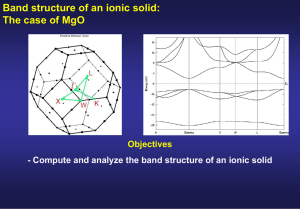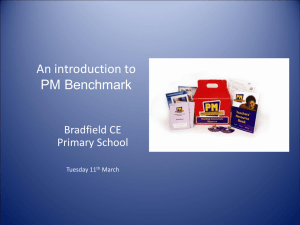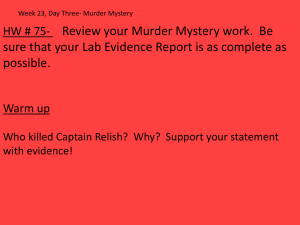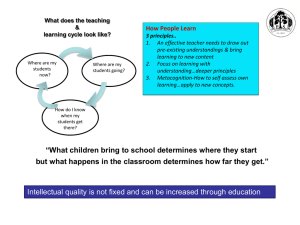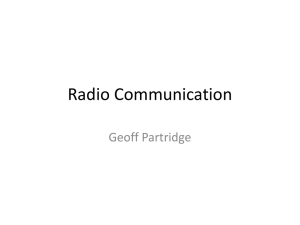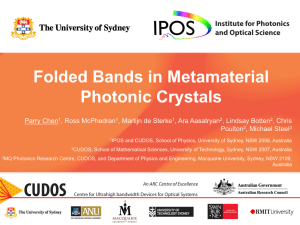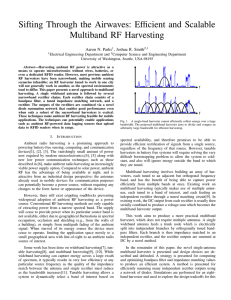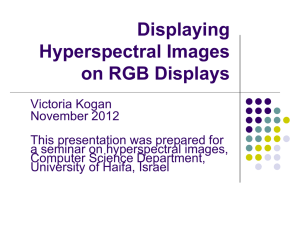Sifting through the Airwaves: Efficient and Scalable Multiband RF
advertisement
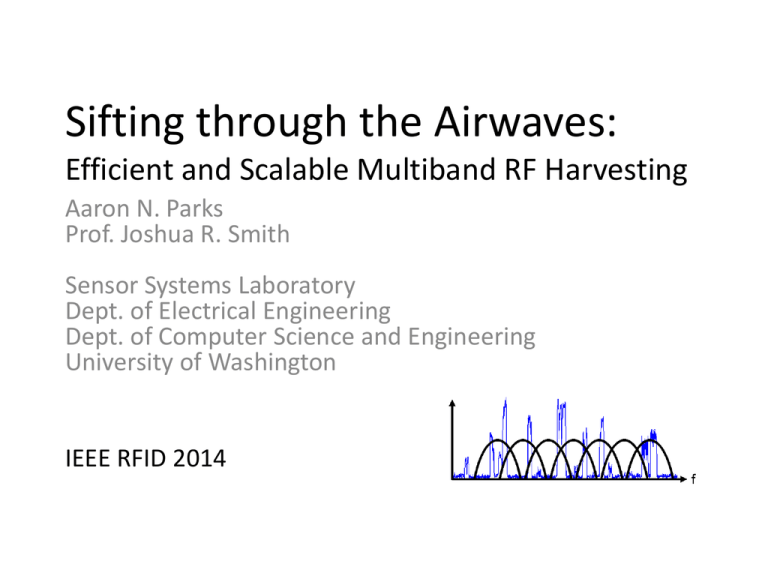
Sifting through the Airwaves: Efficient and Scalable Multiband RF Harvesting Aaron N. Parks Prof. Joshua R. Smith Sensor Systems Laboratory Dept. of Electrical Engineering Dept. of Computer Science and Engineering University of Washington IEEE RFID 2014 Ambient RF harvesting power supplies • Is ambient RF really a power solution? – Not yet. Ambient energy availability is highly variable. • Geographical distribution of ambient sources • Multipath fading, occlusion, shielding, etc. – Sensitivity of communications systems may always be better than sensitivity of RF harvesting systems. • Creates an inherent coverage issue for RF-powered devices which target ambient communications signals. – Intentionally “planted” energy can work well, but “wild”, ambient RF will not be reliable with typical harvesting techniques. Rephrasing the question • How can ambient RF be a power solution? – Addressing availability and sensitivity limits: • Existing work has focused on single band RF harvesting • Single band availability is highly variable • Single band power is not always sufficient for harvesting, even when communication systems can operate. Combine power from multiple RF sources Proposed method • Typical RF harvesting systems seek to impedance match one source antenna to one rectifier. – A few systems have shown multiple antennas matched to multiple rectifiers. • Our system allows distribution of power from one wideband source antenna to multiple rectifiers – Splits incoming RF into several bands – Matches each band separately to a unique rectifier – Rectifier output power is combined at DC Multiband harvester overview Advantages of this method • Allows a large number of bands to be well matched to separate loads via multiple orthogonal current paths • Impedance matching is simplified by the distribution of the match across multiple bands – We hypothesize that harvester impedance can be designed to attain any desired value at an any (countable) number of frequency points. – This means the harvester and antenna can be well matched at many frequency points. • A single antenna means a single antenna port – Manufacturability, cost Multiband harvesting paradigms • Two ways to approach multiband harvesting 1. Target several known bands (targeted multiband harvesting) • For instance, ISM bands could be targeted • High efficiency can be achieved at each band 2. Target a large bandwidth (divide and conquer) • Target a large bandwidth with many closely-spaced harvesting bands, with a constant ratio between band frequencies (e.g., 400, 600, 900MHz) • High efficiency will be hard to maintain across entire spectrum because of interaction between bands Detail: Front end topology • Antenna is connected to a common node (trunk) • Bandpass filter isolates one band from the others – Constrained Q makes isolation tough • Separate matching network for each band • Separate rectifier for each band – 3-stage RF Dickson charge pump • Rectifiers are serially connected Detail: Power summation network • When all bands are excited, a simple serial connection works – What if some bands aren’t excited? – Dead weight! • We reduce wasted power with a network of “shortcut” diodes – Unexcited bands will now be bypassed by low threshold DC diodes Evaluating the power summation network • A lumped element simulation of an 8-band harvester with diode models was done. – Matched to a 50Ω multi-sine source – Two data sets collected Sum output power 6mW 5mW 4mW 3mW 2mW 1mW 1 2 3 4 5 6 7 8 Number of excited bands (equal power per band) • With diode summation network • Without diode summation network • Most test cases benefit from the summation network • Shortcut diode leakage current is a huge factor; higher leakage can eliminate the benefit Benefit of summation network – Found benefit of the summation network for every permutation of excited/unexcited bands 150% Median benefit of summation network over simple serial connection 100% 50% 0% −50% 1 2 3 4 5 6 7 8 Number of excited bands (equal power per band) Two UHF multiband prototypes • 2-band prototype • 5-band prototype back front 2-band prototype characterization • Bandpass filters were centered at f1=539MHz, f2=915MHz • Matching network tuned empirically for each rectifier, assuming 50Ω source impedance • Determined single-tone efficiency across frequency – dB(S11) also recorded using a VNA Single-tone excitation Test power: -10dBm Load resistance: 100kΩ 2-band prototype characterization • Dual-tone excitation (at both design frequencies) Dual-tone excitation Test power: -10dBm Load resistance: 100kΩ • Interestingly, efficiency increases as second tone is introduced! – Perhaps due to increased diode conduction from bandto-band interaction 5-band prototype characterization • Bands placed at 400, 600, 900, 1350MHz (ratio 1.5) • Single-tone excitation: dB(S11) and efficiency Single-tone excitation Test power: -10dBm Load resistance: 100kΩ • Clearly, complexity has increased. – Interaction between bands causes misleading S11 peaks – Peak efficiencies are lower than 2-band. However, bands are more closely placed. – Fifth band efficiency is probably low due to poor RF diode choice Conclusions • Conclusions drawn from this work – It is possible to achieve decent efficiency at a number of widely spaced frequencies • Unknowns which deserve more attention – Does efficiency necessarily scale as a function of design variables such as: • Number of bands • Band spacing – What about efficiency at intermediate frequencies? Can a multiband harvester be a good wideband harvester? Acknowledgements • Google Faculty Research Award • NSF award number CNS 1305072 • Reviewers, and my lab members • The RFID best paper committee! Thank you! Questions? anparks@uw.edu sensor.cs.washington.edu


